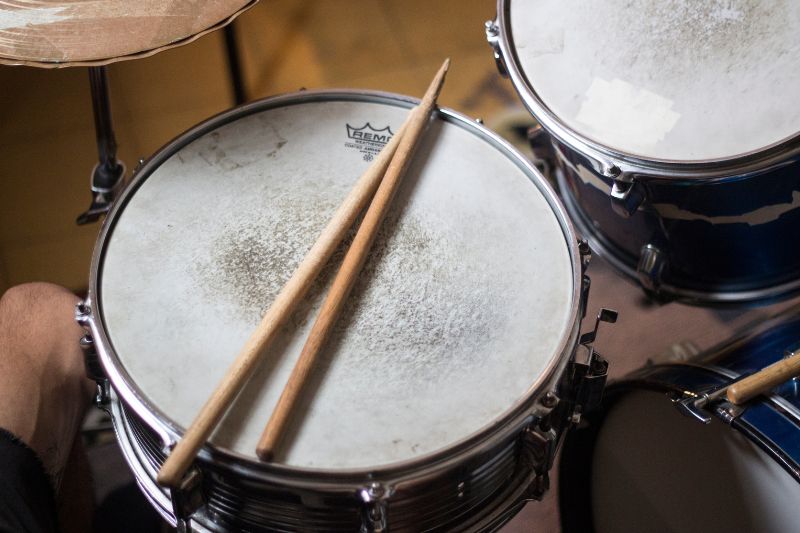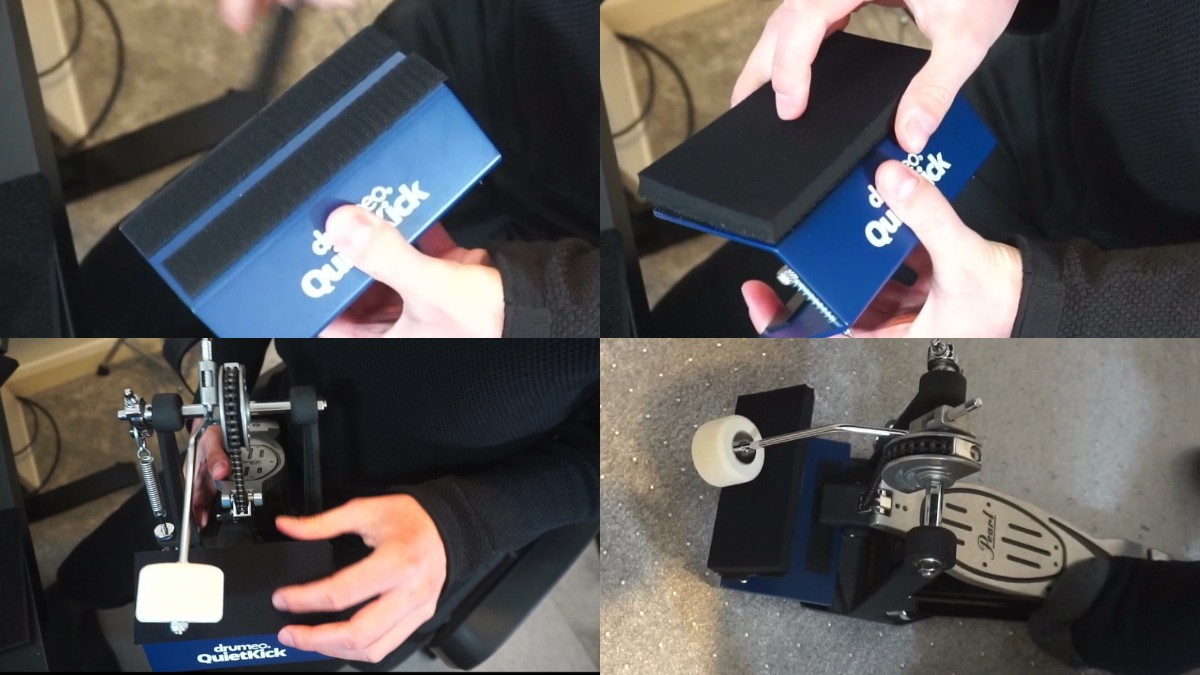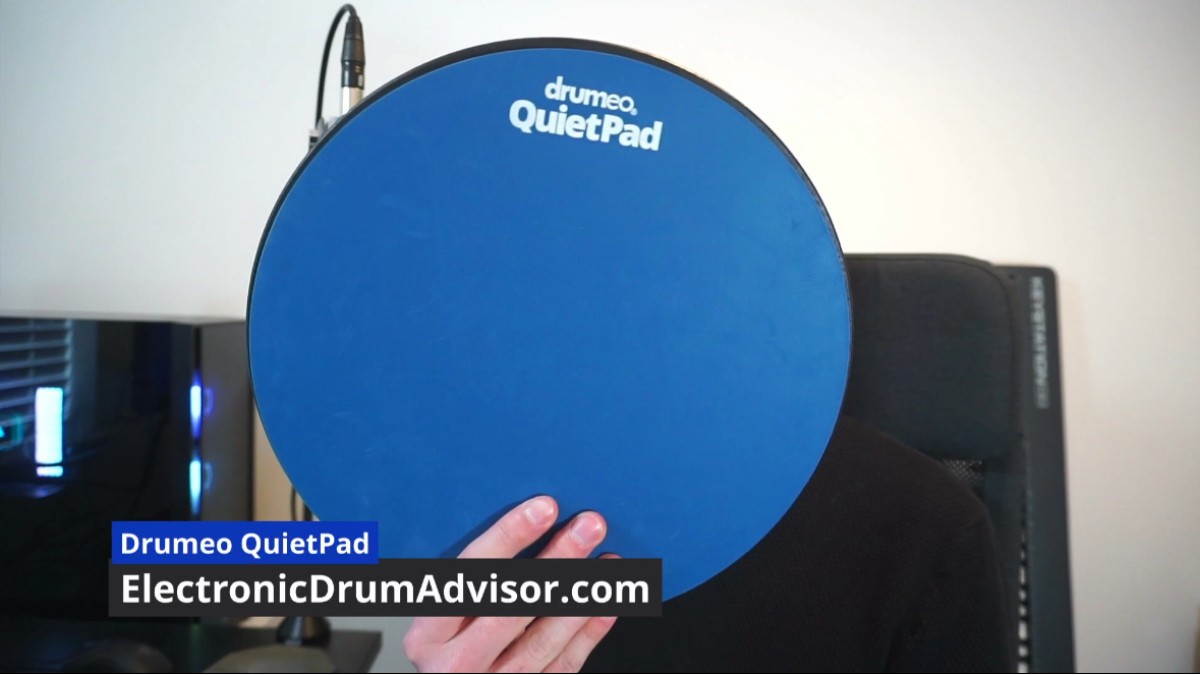How Long Do Drumsticks Last?

The lifespan of drumsticks can vary from a few weeks for heavy hitters to months or even years for drummers who play with a lighter touch and use thicker, harder sticks. Factors such as thickness, playing technique, playing force, and the type of drumstick can all influence how long a set of drumsticks will last.
There are some factors that can affect the lifespan of a drumstick, and the most common ones are the material it is made from, the type of drumming style and technique used, and the overall maintenance and care of the drumsticks.
In general, drumsticks can last anywhere from a few weeks to several months, depending on several factors.
Contents
Drumstick Materials
One of the main factors affecting the drumsticks’ lifespan is the material of the sticks. Wood, plastic, and metal are just a few of the materials available. The material used in drumsticks can affect how long they will last, as each type has its advantages and characteristics.
- Wooden drumsticks are the most common type and are made from a variety of woods, such as hickory, oak, and maple. Although they are typically more sturdy than plastic drumsticks, if they are not properly cared for, they could still break or splinter. Wooden drumsticks should be cleaned off after each use and kept dry to avoid warping or cracking in order to increase their lifespan.
- Plastic drumsticks are a newer alternative to wooden drumsticks and are made from a variety of synthetic materials, such as nylon or polypropylene. Compared to wooden drumsticks, they are typically lighter and less likely to break or splinter. However, they are also less resilient and tend to deteriorate more quickly, particularly when used for hard-hitting or brisk play.
- Metal drumsticks are a specialized type of drumstick made from aluminum or steel. They are much heavier than wooden or plastic drumsticks, but they are also incredibly strong and don’t break or splinter easily. They are less frequently used for softer, more delicate playing styles and are more frequently used for harder, louder music genres like heavy metal or punk rock.
Drumming Style and Technique
The type and technique of drumming are other elements that can impact drumstick longevity. Drumsticks will typically wear out more quickly for drummers who play with a lot of force and power, using heavy hitting or fast playing techniques, than for drummers who play more subtly and deliberately.
Heavy hitting techniques, such as rimshots or cross-sticking, can put a lot of strain on drumsticks and can cause them to wear out faster. Roll patterns or fast single strokes can also cause drumsticks to wear out faster due to the increased number of strikes they are subjected to.
On the other hand, drummers who employ a more controlled, laid-back technique and place an emphasis on accuracy and precision rather than force and power will typically be able to extend the life of their drumsticks.
Drumstick Maintenance and Care
Proper maintenance and care of drumsticks can also help to extend their lifespan. Here are a few tips for keeping your drumsticks in good condition:
- Wipe your drumsticks clean after each use to remove any sweat, dirt, or residue that can build up and cause them to wear out faster.
- Store your drumsticks in a dry place to prevent warping or cracking.
- Invest in a good quality drumstick case or holder to protect your drumsticks when they are not in use.
- Use a drumstick balancer or grip tape to improve the grip and control you have over your drumsticks, which can help to reduce the strain on your hands and wrists and prevent accidental drops or breaks.
To ensure you have a spare set of drumsticks in case your present ones break, think about buying several sets. By doing this, you can ensure that you always have a set of brand-new drumsticks on hand and increase the drumsticks’ total lifespan.
Note: Avoid using drumsticks that are damaged or broken, as they can be dangerous and can cause accidents or injuries. If you notice any cracks, splinters, or other damage on your drumsticks, it is important to replace them as soon as possible.
Different Types of Drumsticks
There are many different types of drumsticks available, each with its unique characteristics and advantages. Here are a few of the most common types and their features:
- General-purpose drumsticks are the most versatile type and are suitable for a wide range of playing styles and techniques. They are typically made from wood, such as hickory or maple, and have a medium taper and a medium-sized barrel tip.
- Rock drumsticks are designed for heavy-hitting and fast-playing techniques and are typically made from hickory or oak. They have a thicker taper and a larger barrel tip, which provides more power and projection.
- Jazz drumsticks are designed for a more controlled, relaxed playing style and are typically made from maple or birch. They have a thin taper and a small barrel tip, which allows for precise and delicate playing.
- Brushes are a specialized type of drumstick that is made from a series of wire or plastic bristles. They are used for playing softer, more delicate styles, such as jazz or blues, and are often used to create a more subtle, nuanced sound.
Conclusion
The material used to make the drumsticks, the drumming style and technique used, as well as the overall maintenance and care of the drumsticks, can all have a significant impact on how long they last. Drumsticks made of wood are typically more sturdy and have a longer lifespan than drumsticks made of plastic or metal, but they are still susceptible to breaking or splintering if not properly maintained.
Drummers who play with greater control, ease, and an emphasis on accuracy and precision will typically be able to extend the life of their drumsticks. Drumsticks can last longer if they are maintained and cared for properly, such as by wiping them clean after each use and keeping them in a dry location.







